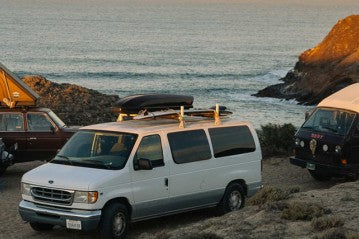
As the popularity of RV travel continues to soar, many adventure enthusiasts are looking for ways to enhance their mobile experience. One of the key considerations for modern-day RV owners is the integration of solar energy systems. An essential component of such systems is the RV inverter. In this blog post, we will delve into the world of RV inverters, understanding their purpose, functionality, installation process, and the benefits they bring to RV owners.
1. What's an Inverter used for in an RV?
An inverter for an RV is a crucial device that converts DC (direct current) power generated from solar panels or batteries into AC (alternating current) power, which is compatible with the electrical systems of most appliances used in recreational vehicles. It enables RV owners to power their household devices and appliances, such as laptops, televisions, microwaves, and refrigerators, while they are off-grid or without shore power.
2. How do RV Inverters work?
RV inverters work by utilizing advanced electronic circuitry to convert the DC power stored in batteries or generated by solar panels into AC power. The process involves three primary stages: conversion, regulation, and distribution. Firstly, the inverter converts the DC power into AC power at the desired voltage and frequency. Then, it regulates the AC power to ensure it remains stable and clean, protecting sensitive electronic devices from voltage fluctuations. Finally, the inverter distributes the converted AC power to the RV's electrical system, allowing appliances to function seamlessly.
3. How to choose the right inverter size for your RV?
Selecting the appropriate inverter size for your RV is crucial to ensure optimal performance and compatibility. The power capacity of an inverter is measured in watts (W). To determine the right size, calculate the total power requirements of all the appliances you wish to operate simultaneously. Consider the starting (surge) power and running power of each device. It's important to choose an inverter that can handle both the peak power demands and continuous power requirements without overloading. Additionally, take into account future power needs and potential expansions to avoid the need for frequent upgrades.
4. How to install an RV inverter?
Installing an RV inverter requires careful planning and technical know-how. Here's a simplified guide to the installation process:
a. Assess Power Needs: Determine the power requirements of your RV by listing all the appliances you intend to power with the inverter. This assessment will help you choose the right inverter size.
b. Battery Connection: Connect the inverter to the RV's battery bank using appropriately sized cables. Ensure proper polarity and tight connections to avoid voltage drops or overheating.
c. Install the Inverter: Choose a suitable location within the RV to mount the inverter. Ensure it is secure and well-ventilated, as inverters generate heat during operation.
d. AC Wiring: Connect the inverter's AC output to the RV's electrical system. This typically involves running AC wiring from the inverter to the RV's breaker panel or directly to selected outlets.
e. Test and Verify: Once the installation is complete, test the system by turning on various appliances to ensure the inverter is functioning correctly and delivering the required power.
5. Is an RV inverter worth it?
Undoubtedly, investing in an RV inverter is worth it for RV enthusiasts who value the freedom of off-grid adventures. Here are some key reasons why:
a. Independence: An RV inverter allows you to enjoy the comforts of home while exploring remote locations. You can power appliances and devices without relying solely on shore power or noisy generators.
b. Energy Efficiency: By harnessing solar energy through your inverter, you can significantly reduce your reliance on traditional energy sources, promoting a greener and more sustainable lifestyle.
c. Cost Savings: Over time, an RV inverter can save you money by eliminating the need for frequent generator refueling and maintenance costs.
d. Quiet Operation: Unlike generators, RV inverters operate silently, ensuring a peaceful camping experience without disturbing the tranquility of nature.
6. Best all-in-one solar Inverter for an RV
When it comes to all-in-one solar inverters for RVs, one popular choice is the 8200W DC 48V AC 220V All-In-One Solar Inverter. This exceptional product combines an inverter, charger, and transfer switch into a single unit, simplifying installation and maximizing efficiency. It offers seamless integration with solar panels, allowing for effective energy harvesting and storage. With its robust power output, advanced safety features, and user-friendly interface, the All-In-One Solar Inverter stands out as an ideal solution for RV owners seeking a reliable and versatile solar inverter.
Conclusion
As the world embraces renewable energy, RV owners can now explore uncharted territories while staying connected and enjoying modern comforts. RV inverters play a crucial role in harnessing the power of solar energy and enabling off-grid adventures. By understanding their functionality, selecting the right size, and installing them correctly, RV enthusiasts can unlock a world of possibilities, enhancing their mobile experiences while minimizing their environmental impact. So, why wait? Embrace the benefits of an RV inverter and embark on a journey of freedom and sustainability.

0 comments